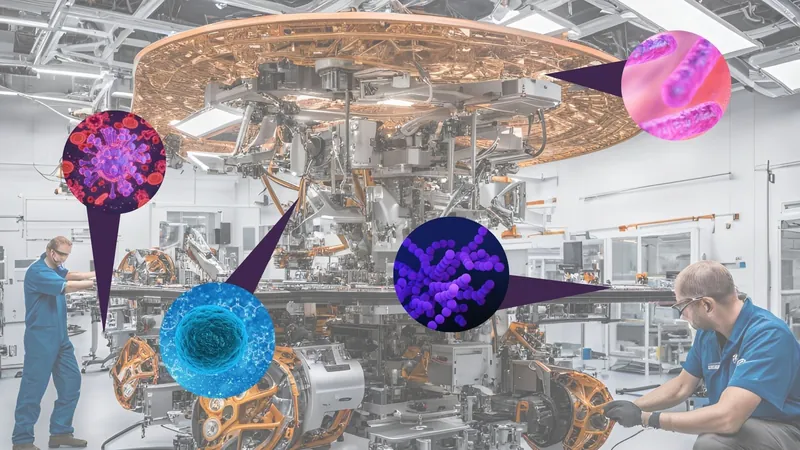
Shocking Discovery in Mars Cleanroom: New Bacterial Species Could Revolutionize Science!
2024-12-31
Author: Ming
Introduction
When it comes to preparing a spacecraft for the extraordinary journey to Mars, NASA’s meticulous standards for cleanliness are paramount. They strive to prevent any Earth bacteria from hitching a ride on the spacecraft. Surprisingly, even in the most sterile environments, microbial life can find a way to thrive. Recently, an astonishing revelation has emerged from the assembly cleanroom of the Mars 2020 mission: novel bacterial strains with groundbreaking potential!
The Discovery
An exhaustive genetic investigation led by an international coalition of experts from institutions including Yenepoya University in India, University of Galway in Ireland, Indian Institute of Technology Madras, and the Jet Propulsion Laboratory in California uncovered a staggering total of 110 bacterial strains lurking in the cleanroom. Using advanced whole-genome sequencing techniques, the researchers made a jaw-dropping discovery: two of these strains did not match any known species in their comprehensive database, prompting them to classify these microbes under the genus Neobacillus, specifically naming the new species N. driksii.
Significance of N. driksii
Remarkably, genomic analysis revealed that all strains of N. driksii possess a unique pathway that allows them to produce lasso peptides, specifically a compound known as paeninodin. Lasso peptides are akin to a lasso used by cowboys, and they hold immense significance in medical science for their ability to combat infections and inhibit harmful enzymes. This revelation puts N. driksii at the forefront of potential breakthroughs in biotechnology, where its lasso peptides may be harnessed to combat dangerous bacteria and viruses.
Broader Implications
But that’s not all! The implications of this discovery reach far beyond just medical applications. These bacteria have genetic capabilities to produce nicotianamine-like siderophores—molecules that capture essential metal ions. In agriculture, these molecules could enhance plant growth by improving iron absorption, leading to healthier crops. Additionally, their bioremediation potential could help tackle heavy metal pollution, providing a natural solution to environmental crises.
Exploration of Survival Strategies
The implications of this research extend to the exploration of survival strategies in extreme conditions, whether on other planets or inhospitable environments on Earth. Studying how N. driksii thrives can inspire engineering bacteria that withstand harsh conditions, potentially aiding future missions to Mars and beyond.
Conclusion
This transformative research highlights the incredible adaptability of life and points to countless opportunities across various scientific fields. As more studies emerge, the prospects for harnessing these incredible bacteria continue to expand, heralding a new era in research and application!


 Brasil (PT)
Brasil (PT)
 Canada (EN)
Canada (EN)
 Chile (ES)
Chile (ES)
 Česko (CS)
Česko (CS)
 대한민국 (KO)
대한민국 (KO)
 España (ES)
España (ES)
 France (FR)
France (FR)
 Hong Kong (EN)
Hong Kong (EN)
 Italia (IT)
Italia (IT)
 日本 (JA)
日本 (JA)
 Magyarország (HU)
Magyarország (HU)
 Norge (NO)
Norge (NO)
 Polska (PL)
Polska (PL)
 Schweiz (DE)
Schweiz (DE)
 Singapore (EN)
Singapore (EN)
 Sverige (SV)
Sverige (SV)
 Suomi (FI)
Suomi (FI)
 Türkiye (TR)
Türkiye (TR)
 الإمارات العربية المتحدة (AR)
الإمارات العربية المتحدة (AR)